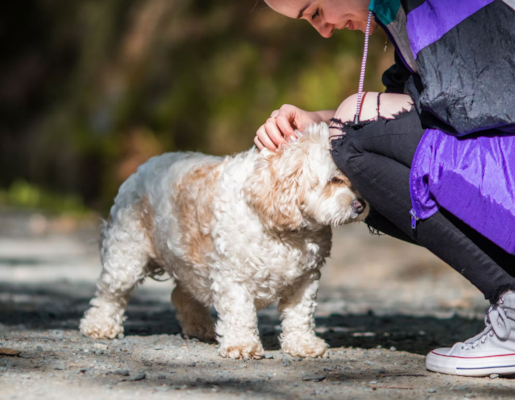
Communication is an art whether it is between two people, a pet owner and his/her dog, between two dogs, or between a dog and a cat.
Dogs have moods, wants, and needs just like we do, and they use their body language to communicate them to us.
Reading dog body language is a skill. The first thing you need to do in order to have fluid communication with your dog is to be perceptive and learn to understand what he is trying to tell you. Dogs communicate through their body posture, eyes and facial expressions, tail wagging, and ear positions. They have their own ways of telling us that they are scared, happy, nervous, or angry.
Understanding what your dog is trying to tell you through his body language is essential in your pet parent-dog relationship. It ensures mutual communication and gives you the opportunity to identify uncomfortable situations for your dog.
Here are a few tell-tale signs to help you understand your dog’s emotions, state of mind, and moods.
Table of Contents
- The body language of a happy dog.
- The body language of a playful dog.
- The body language of a relaxed dog.
- The body language of a stressed dog.
- The body language of a dominant dog.
- The body language of a submissive dog.
- The body language of an alert dog.
- The body language of a frightened dog.
- The body language of an aggressive dog.
The body language of a happy dog.
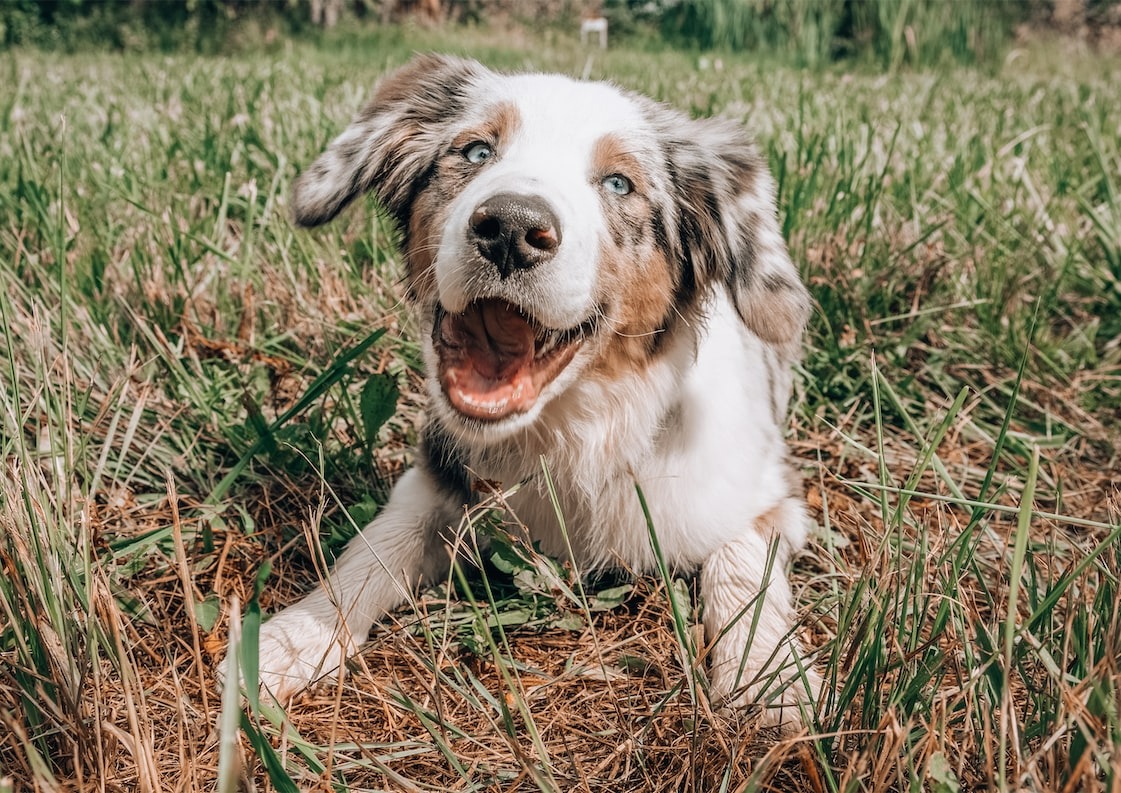
How to tell if your dog is happy? Happy dogs exude joy. Everything about them says they are in a good mood. Most pet parents are familiar with the sight of a dog’s full body wiggle, tornado-inducing tail wagging, and excitement when they return home after being gone for an hour or two. That is the sight of a very happy dog. Apart from their exciting moments, dogs tend to be happy most of the time.
Body language signs of a happy dog are:
- Eyes – a happy dog will have a soft gaze, with eyes wide open expressing content and affection
- Mouth – his mouth will be slightly open appearing to smile, with his lower teeth showing
- Ears – his ears will be in their natural loose position
- Body – his head will be carried high in a confident manner and his body will appear relaxed
- Tail – his tail will wiggle in a soft natural way
- Barking – a happy dog will have a high pitched short bark
The body language of a playful dog.
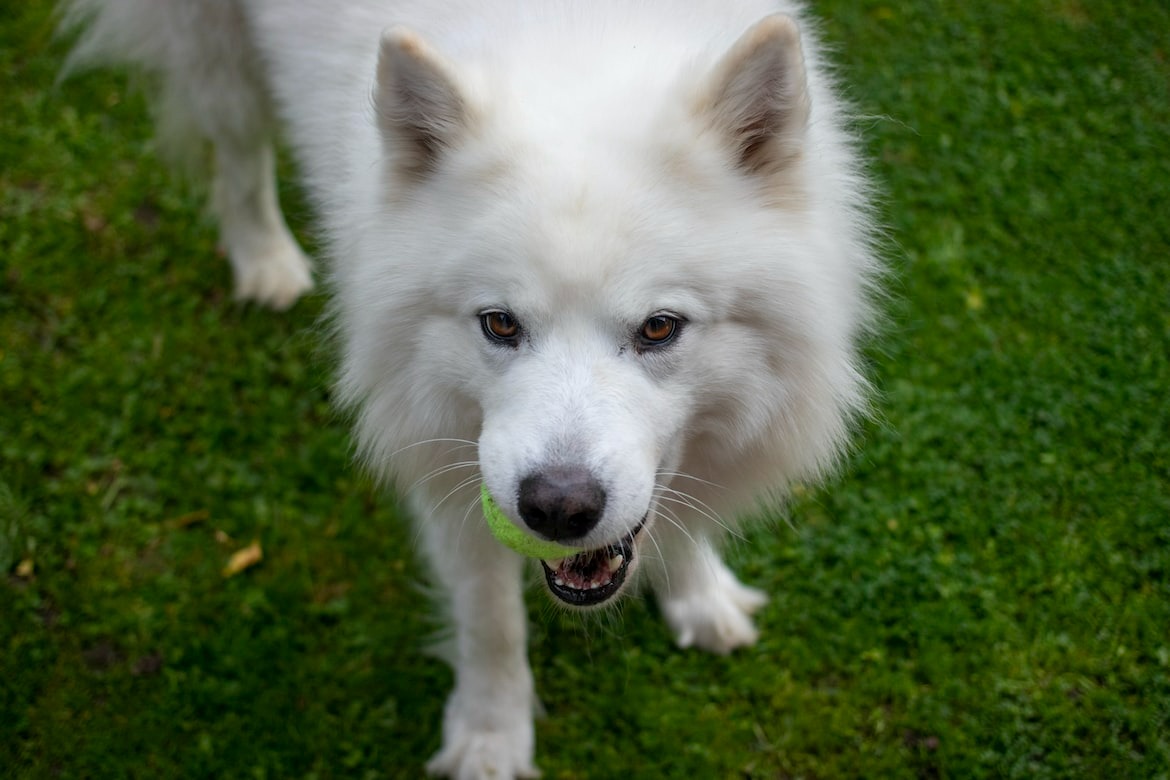
Dogs are playful creatures. Whether they are inviting a cat, another dog, their favorite human, or a donkey to play, dogs will use their body language to express their intentions. They either playfully bounce around, sprint from one place to the next, trot along with a ball or a canine toy in their mouth, or simply get in their ready-set position expressing their desire for a chase.
Body language your dog is displaying when he wants to play:
- Eyes – his eyes will be wide open, his expression attentive and eager
- Mouth – his mouth will be open, his tongue slightly out
- Ears – his ears will be relaxed
- Body – a dog that is in a playful mood will bend his front paws almost to the ground and keep his back paws firm to the ground and display a bouncy playful movement
- Tail – his tail will be in an upward position and wagging
- Barking – his bark will be short and excited
The body language of a relaxed dog.

Knowing when your dog is relaxed and calm is perhaps the most important step to reading dog body language. It represents the basis from which all other moods, emotions, and dispositions are deciphered and understood. A relaxed dog will have a calm easygoing demeanor, relaxed ears, expression, tail, and overall body posture.
The body language of a stressed dog.

Dogs go through stressful situations just as much as everyone else. They feel stress when they are left alone, overheated, bored, anxious, or even sick. Stress in dogs can manifest in a number of ways. They can either feel tired and sleep all the time, yawn to relieve tension, display short and frantic licks, don’t feel like being petted or cuddled, or they can express their stressful mood by going from one room to the next and not finding a comfortable or suitable place to rest in. Knowing when your dog is stressed can help you take action to relieve his stress, get him in a comfortable state, and cheer him up.
The body language of a stressed dog includes:
- Eyes – a stressed dog will either have wide eyes with the white area showing or slightly open sleepy eyes
- Mouth – his mouth will be open and he will be rapidly panting or yawning often
- Ears – his ears will be held back close to his head
- Body – his body will be in a lowered, unenergetic position, his paws might sweat
- Tail – his tail will be down
- Barking – he will whine occasionally
The body language of a dominant dog.
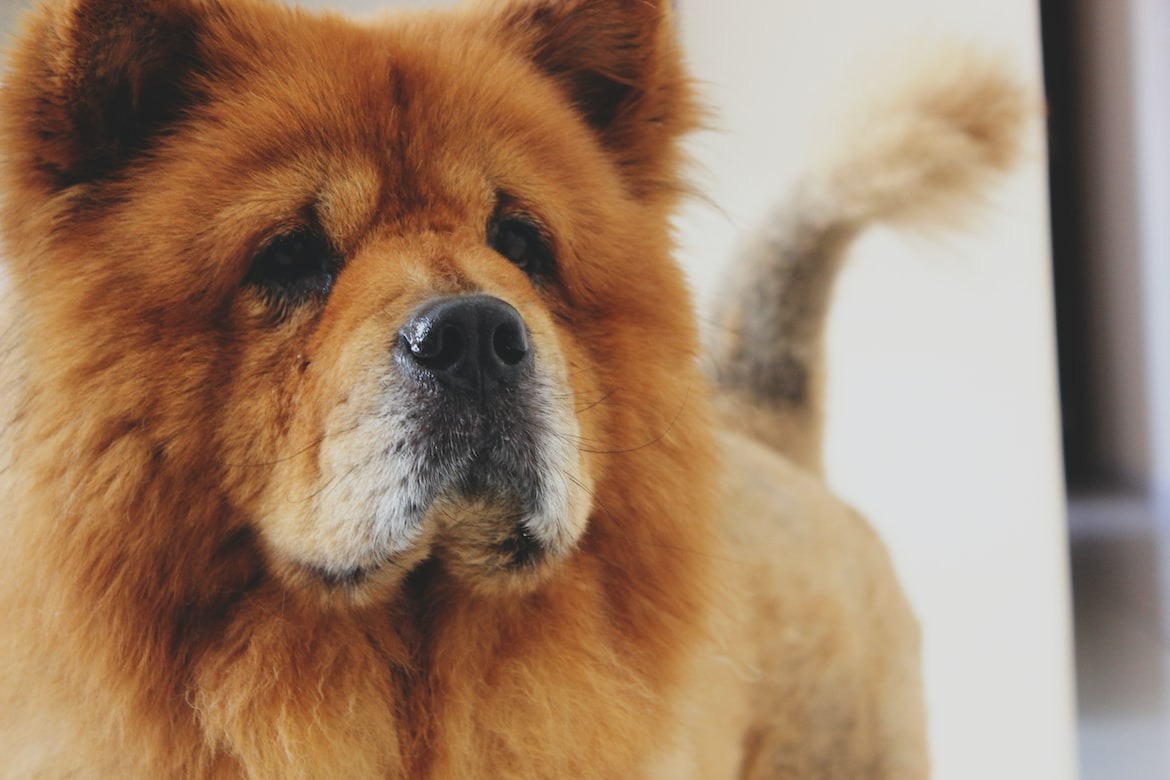
Some dog breeds will try to assert dominance over every situation and everyone they meet. Although this is an issue that can be dealt with by proper training most of the time, some dogs have a stronger instinct to dominate depending on their circumstances, while others need to be the alpha of the pack no matter what. Dominance in the domestic canine world is displayed over territories, food, toys, social interactions between two dogs, and the owner’s attention and affection. Identifying when your dog is displaying dominant behavior towards you or anyone else is a key factor in helping you take precautions or avoid certain situations altogether.
A dominant dog will display the following signs:
- Eyes – his eyes will be narrow with a fixed deep gaze and attentive expression
- Mouth – his lips will appear curled and his teeth will be slightly visible
- Ears – his ears will be stiff in place and pointed forward
- Body – his nose and forehead will appear wrinkled, his body leaning forward
- Tail – his tail will be raised and stiff
- Barking – he will try to assert dominance with a short deep growl
The body language of a submissive dog.

When your dog appears submissive this generally means that he respects you and considers you his pack leader. A submissive dog will obey your commands and follow your lead without hesitation knowing you are there to protect and take care of him. That being said, some dogs display an overly submissive behavior. Understanding what this is will assist you in helping your dog overcome it and build up his self-confidence.
Body language signs pointing to an overly submissive dog:
- Eyes – his gaze will be lowered, unable to hold eye contact for long
- Mouth – he will be licking his mouth in a short and quick fashion
- Ears – his ears will be held slightly back
- Body – his body will be in a lowered position almost touching the ground, sometimes with a paw up
- Tail – his tail will be tucked between his back legs
- Barking – an overly submissive dog will be completely quiet
A submissive dog does not mean a scared dog unless he is frightened into total submission by a dog or human that displays aggression towards him. In this case, the signs to look out for are:
- Eyes – his eyes will be almost closed avoiding eye-contact
- Mouth – his mouth will be entirely closed in a lowered position at the corners
- Ears – his ears will be flat on his head
- Body – he will be on his back with his body slightly curled
- Tail – his tail will be tucked between his back legs, curled close to his body
- Barking – a dog that is frightened into submission will avoid making any sounds
The body language of an alert dog.
Dogs display an alert behavior when they are met with something new, suspicious, or interesting, or when they find themselves in an unfamiliar situation. When a dog is alert this generally means that something has piqued his interest and he is analyzing it.
Body language that shows your dog is alert:
- Eyes – his gaze will be attentive, his eyes wide open
- Mouth – his mouth will be closed
- Ears – his ears will be pointed forward
- Body – his body will be slightly leaning forward
- Tail – his tail will be stiff in a slightly upward position
- Barking – a dog that is in his alert mode will have a short deep “half of bark”
The body language of a frightened dog.

Some dogs are frightened by cars, other dogs, crowds, nail clippers, their shadows, and even the smallest noise, while others sleep peacefully through thunderstorms and construction work. There are many situations that appear threatening and frightful to dogs. It’s important to know how to read your dog’s body language and identify those situations in which he is frightened in order to help your dog overcome them.
A frightened dog will display the following body language signs:
- Eyes – his eyes will be wide open with an alert expression
- Mouth – his mouth will be closed
- Ears – his ears will be held back tight along his head
- Body – his body will be lowered towards the back with his back legs slightly bent, extreme fear can manifest in full-body trembles
- Tail – his tail will be held down with an undetermined wag
- Barking – a frightened dog will either whine softly or be completely silent
The body language of an aggressive dog.
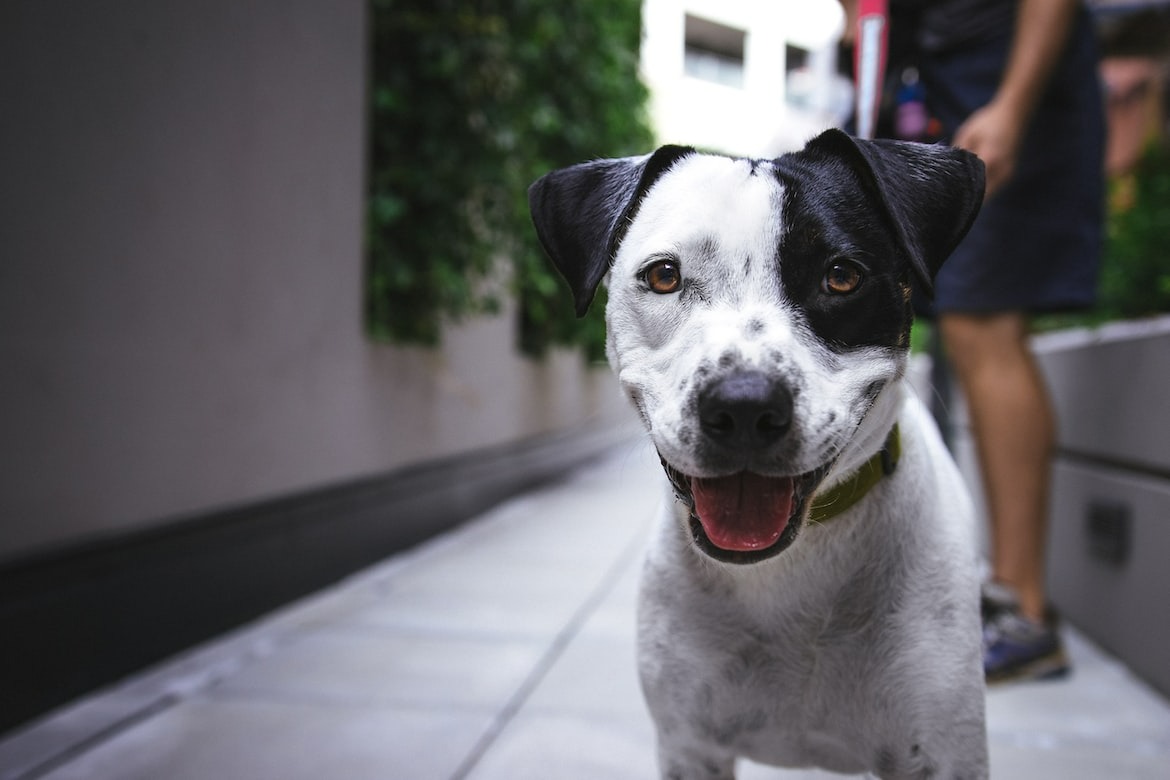
Some breeds of dogs are aggressive in nature while others spend their entire lives not showing the tiniest sign of aggression. Aggression in dogs can be an inherited behavior, a taught behavior, or a defense mechanism (generally in mishandled dogs). Dogs are generally aggressive when they need to be. More often than not, they display aggression when they feel threatened by someone, scared, or in danger.
Before you can take on training to fix any aggressive behavior issues, you need to identify what is making your dog act in an aggressive manner. To do that, you need to be able to read your dog’s body language the moment he starts behaving differently.
Dogs don’t jump from calm to aggressive in a nanosecond. They usually check things out first, become alert, change their demeanor, take on a more dominant position, and finally assert their aggressive ready-to-attack posture.
Aggression is a multi-phase process and it’s essential that you learn to identify and fix it in order to avoid any dangerous or harmful situations for you or your dog.
An aggressive dog will display the following body language:
- Eyes – his eyes will be alert with a curious expression at first then gradually narrow with a fixed deep gaze
- Mouth – his mouth will be open, his lips curled with visible teeth, his gums will be showing
- Ears – his ears will be raised and pointed forward
- Body – his body will be straight and stiff at first expressing alertness, then it will gradually be leaning forward, his forehead and the area around his nose will become wrinkled
- Tail – his tail will be stiff in a straight line with his body or slightly raised, frizzed, and possibly vibrating
- Barking – a dog that is about to be aggressive will have a short determined bark at first that will gradually become a consistent threatening growl
Scroll down to see FAQs about dog body language!
What To Read Next
What Are Designer Dogs? Then vs Now
Designer Puppy Breeds Q and A
Frequently Asked Questions
What does a dog's relaxed body language look like? A relaxed dog will have a calm demeanor, relaxed ears, a soft expression, a loose tail, and an overall easygoing body posture. This is the basis from which all other moods, emotions, and dispositions are deciphered and understood.
How can I understand my dog's tail language? A dog's tail can tell you a lot about their mood. A wagging tail often indicates happiness, while a stiff or tucked tail can signal fear or aggression. Understanding these signals can help improve your communication with your pet.
What are some common dog communication signals? Dogs communicate through their body posture, eyes, facial expressions, tail wagging, and ear positions. These signals can tell you if they are happy, nervous, stressed, or even aggressive.
How can I handle a stressed dog? If your dog is showing signs of stress, such as yawning, panting, or moving from one room to another without finding a comfortable place to rest, it's important to take action to relieve their stress. This could involve providing a quiet space, engaging in calming activities, or consulting with a vet or a pet behaviorist.
What does a dog's body language look like when playing with other dogs? When dogs are in a playful mood, they may display wide-open eyes, an open mouth with a slightly protruding tongue, relaxed ears, and a bouncy body movement. Their tail will be in an upward position and wagging, indicating their eagerness to play.
How can I read my dog's body language? Reading your dog's body language involves being perceptive and understanding their signals. Pay attention to their body posture, eyes, facial expressions, tail wagging, and ear positions. These can tell you if they are scared, happy, nervous, or angry.
What does submissive dog body language look like? A submissive dog may display a lowered gaze, quick licking of the mouth, ears held slightly back, a lowered body position, and a tail tucked between their back legs. They may also be completely quiet, indicating their submission.
How can I recognize aggressive dog body language? An aggressive dog may have alert eyes with a deep gaze, an open mouth with visible teeth, raised and pointed ears, a straight and stiff body, and a stiff tail. They may also display a short determined bark that can gradually become a consistent threatening growl. Recognizing these signs can help prevent dangerous situations.




